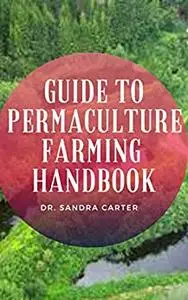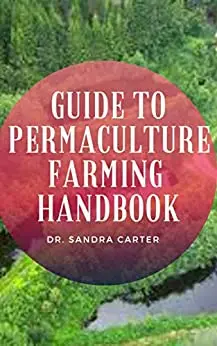Guide to Permaculture Farming Handbook: Permaculture is an approach to agricultural design that focuses on whole systems thinking, as well as using or simulating patterns from nature. by Dr. Sandra Carter
English | January 24, 2021 | ISBN: N/A | ASIN: B08TS2KD5R | 78 pages | MOBI | 0.19 Mb
English | January 24, 2021 | ISBN: N/A | ASIN: B08TS2KD5R | 78 pages | MOBI | 0.19 Mb
Permaculture is an approach to agricultural design that focuses on whole systems thinking, as well as using or simulating patterns from nature.The term originated from David Holmgren in 1978, but the practices of permaculture date back much further. Care for the earth. In other words, help all life systems continue to exist and multiply. Because if we don’t have a healthy planet, humans can’t exist at all. Care for the people. Allow people to access resources they need to survive. Fair share. You should only take what you need, and reinvest any surplus. Any extra can go forward to helping fulfill the two other core tenants. This includes returning waste products back into the system so it can be made useful again.Conventional agriculture tends to work against nature, instead of with it.We tear up whatever natural ecosystem was on the land before, and turn it into a blank slate that we can plant crops or raise livestock on. But there’s another way.By using principles of permaculture, you’re working with nature, instead of against it. That means that you can let nature do most of the work for you.David Holmgren’s original ideas regarding permaculture can be broken down into twelve design principles.Take time to observe nature before making any decisions or changes. Often just by observing, we can get a lot of insight into how to design our farm or garden to suit what’s already there.In nature, resources tend to come in peak periods. We get a lot of sunlight in the summer, but much less in the winter. In some places there are rainy seasons some of the time, and droughts other parts of the time.Permaculture is big on capturing resources like rainwater or solar electricity so they can be used later as needed.Make sure you’re being rewarded for the work that you’re putting in. After all, you probably aren’t farming just for a hobby. You want to get food, an income, or something else in return. You can’t work on an empty stomach. Hold yourself accountable, and also be open to suggestions and critiques from others. If there is something you’re doing that’s inappropriate for your situation, you want to know about it, so your systems can function well.Nature has an abundance of renewable resources that we can make use of. We should prioritize those, and try to reduce the consumption of non-renewable resources.Being “zero waste” is a big trend right now, but really it all started with permaculture. If we value all of the resources that we have available and use a bit of ingenuity, we can make sure that nothing goes to waste.Take a look at nature and society. You can usually observe patterns in things like how beehives are organized, the design on a snail shell, or other things to give inspiration for your designs.You can borrow from these designs and add some details and flair of your own.Permaculture is all about having things support each other and work together, instead of having everything exist as an island unto itself.By pairing different plants, livestock, and other objects together correctly, we can take advantage of relationships they can have with each otherPermaculture isn’t about making big changes overnight. Making gradual changes and working with slow systems makes them much easier to maintain.Plus they tend to have a more sustainable outcome. When it comes to permaculture, slow and steady wins the race.Where conventional farming is all about monoculture and many farmers traditionally only grow one or two crops, permaculture is big on diversity. A diverse system is much less vulnerable to threats like pests, diseases, and other problems than a homogeneous one. Don’t put your eggs all in one basket.Where two different things meet is usually where the most interesting stuff happens. It’s usually the most productive and diverse part of the whole system.



